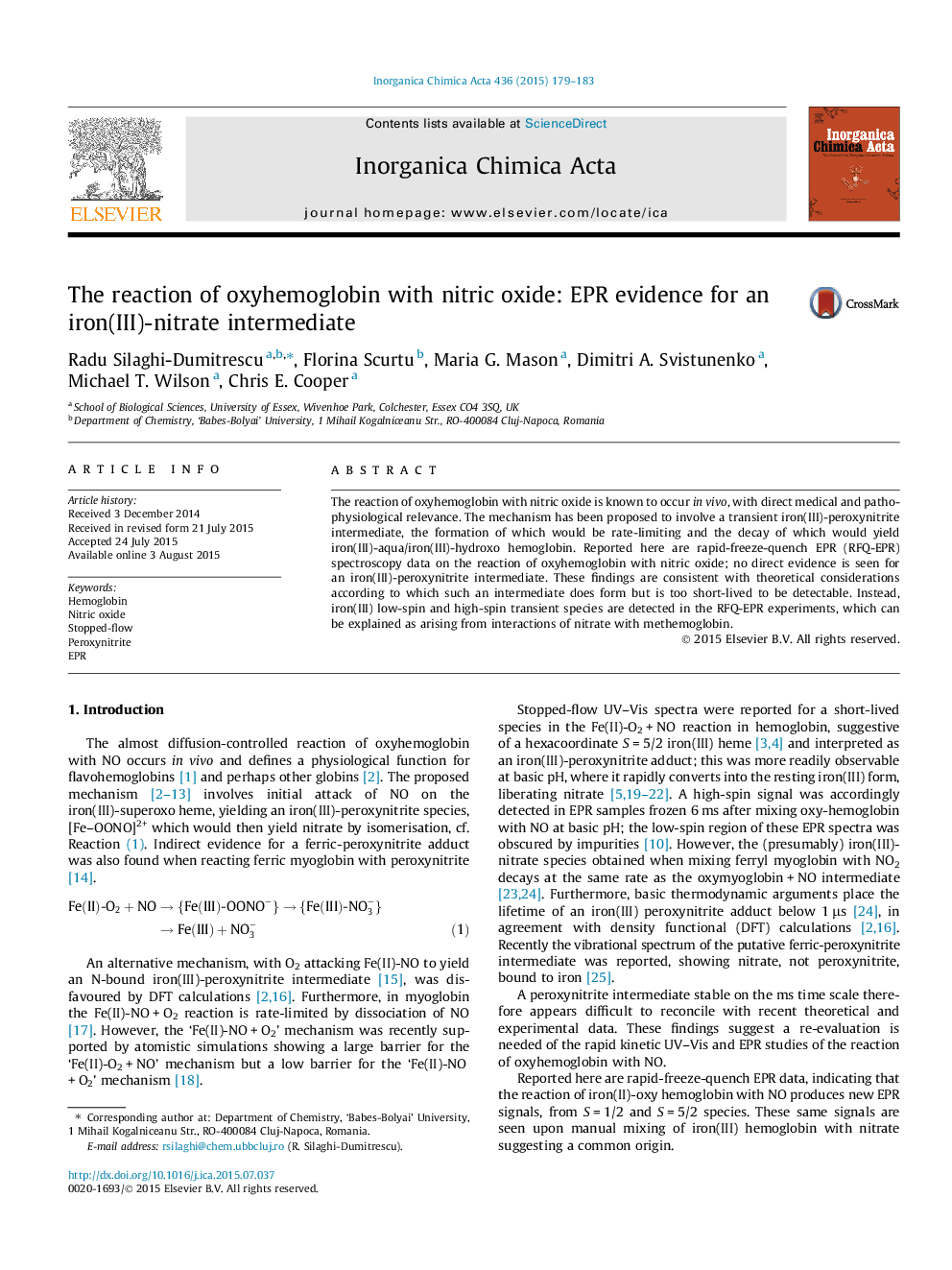| Article ID | Journal | Published Year | Pages | File Type |
|---|---|---|---|---|
| 1307641 | Inorganica Chimica Acta | 2015 | 5 Pages |
•The mechanism of reaction between oxy hemoglobin/myoglobin and nitric oxide is examined.•Rapid-freeze-quench and stopped-flow UV–Vis suggest an Fe(III)-nitrate intermediate.•The preceding Fe(III)-peroxynitrite isomer is too unstable to detect, in line with theory.
The reaction of oxyhemoglobin with nitric oxide is known to occur in vivo, with direct medical and pathophysiological relevance. The mechanism has been proposed to involve a transient iron(III)-peroxynitrite intermediate, the formation of which would be rate-limiting and the decay of which would yield iron(III)-aqua/iron(III)-hydroxo hemoglobin. Reported here are rapid-freeze-quench EPR (RFQ-EPR) spectroscopy data on the reaction of oxyhemoglobin with nitric oxide; no direct evidence is seen for an iron(III)-peroxynitrite intermediate. These findings are consistent with theoretical considerations according to which such an intermediate does form but is too short-lived to be detectable. Instead, iron(III) low-spin and high-spin transient species are detected in the RFQ-EPR experiments, which can be explained as arising from interactions of nitrate with methemoglobin.
Graphical abstractReported here are RFQ-EPR data indicating that the suggested iron(III)-peroxynitrite intermediate is too unstable to detect; instead, iron(III) low-spin and high-spin transient species are detected, all of which can be explained as arising from interactions of nitrate with methemoglobin.Figure optionsDownload full-size imageDownload as PowerPoint slide
